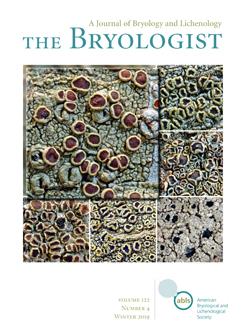Phylogenetic studies revealed a high level of diversity within the lichen-forming fungus so far identified with the name Maronina multifera (Protoparmelioideae, Parmeliaceae), currently accommodated in the genus Neoprotoparmelia. Here, six new species of Neoprotoparmelia are described as new to science based on morphological and molecular data, mostly from northeastern Brazil. The new species are: Neoprotoparmelia nigra (Brazil), with 32-spored asci, lacking alectoronic acid, and with pale, K-negative apothecial base, and blackish apothecial disc; N. paramultifera (Brazil), with 64-spored asci, alectoronic acid, pale, K-negative apothecial base, and purplish brown apothecial disc and thick apothecial margins; N. pseudomultifera (Brazil), with 32-spored asci, lacking alectoronic acid, and with pale, K-negative apothecial base and brown apothecial disc (no reddish or purplish tinge); N. purpurea (Brazil), with 32-spored asci, lacking alectoronic acid, and with pigmented, K+ purplish-violet apothecial base and purplish brown apothecial disc; N. rubrofusca (Colombia), with 32-spored asci, lacking alectoronic acid, and with pigmented, K+ purplish-violet apothecial base, and red-brown apothecial disc and thin, evanescent margins; and N. sexdecimspora (Brazil), with 16-spored asci, alectoronic acid, pale, K-negative apothecial base, and purplish brown apothecial disc. The name N. multifera is restricted to a species from the northern Andes with 64-spored asci, alectoronic acid, pale, K-negative apothecial base, and purplish brown apothecial disc with thin margins, while the new combination N. camptotheca is adopted for a species in eastern Brazil with 32-spored asci, alectoronic acid, pale, K-negative apothecial base, purplish brown apothecial disc, and smooth margin (all other species in the complex having crenulate margins). The following two new combinations are also proposed: Neoprotoparmelia saxicola and N. rogersii (syn.: N. capensis V.J.Rico, A.Crespo & Garima Singh).
How to translate text using browser tools
22 October 2019
High diversification in the Neoprotoparmelia multifera complex (Ascomycota, Parmeliaceae) in northeast Brazil revealed by DNA barcoding and phenotypical characters
Lidiane Alves dos Santos,
André Aptroot,
Robert Lücking,
Marcela Eugenia da Silva Cáceres
ACCESS THE FULL ARTICLE

The Bryologist
Vol. 122 • No. 4
October 2019
Vol. 122 • No. 4
October 2019
ITS
lichenized fungi
multispored asci
Parmeliaceae
phylogeny
taxonomy




